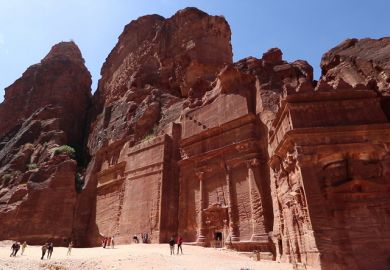Originally listed with the subtitle "The European World System in the Second Millennium bc", this long-awaited study is a detailed account of later prehistoric societies in Europe north of the Alps between 1100 and 150 bc, in the perspective of their inter-regional connections. It provides a unique survey of the wealth of archaeological evidence for this time-span, chronologically organised within 200 to 300-year blocks, and a sketch of a more comprehensive vision of the development of what an earlier generation of scholars would have labelled "barbarian Europe" in the Bronze and Iron Ages.
Unlike some earlier attempts, it is not motivated by the desire to trace some essential "European" quality back into prehistoric times; but nor is it merely an unreflective guide to the algebraic complexities of central European taxonomic nomenclature for the hundreds of thousands of bronze artefacts that fill national and regional museums throughout the continent. It avoids the vacuities that have inevitably accompanied the Council of Europe's "Year of the Bronze Age" (1994 but still echoing), whose earlier - though more localised - manifestations of political pride were largely responsible for the accumulation of artefacts relating to the perceived ancestral origins of Europe's constituent national entities. It mostly takes care not to use contentious ethnic and linguistic labels ("Celtic", "Germanic") arising from this interest and so often used in presenting this period, and only employs them where they can be rooted in a historical record.
Instead, its interpretative inspiration comes from a long tradition in Scandinavian archaeology (associated with the Swede Oscar Montelius) of seeking international cultural links, revitalised by some recent movements within Marxism and in particular the world-systems theory echoed in its subtitle.
For whereas Montelius's internationalist instincts to some extent led him astray in dealing with earlier periods (and in particular with the megalithic monuments of the Neolithic period, seen as echoes of Egyptian overseas voyaging), so contributing to the disrespect into which studies of "cultural diffusion" have largely sunk, his perceptive definition of links between the Nordic Bronze Age cultures and those of pre-Roman Italy has remained the backbone of Bronze Age studies, giving historical meaning to the similarities in artefact-design that trace out the pattern of contacts related to the "amber route" between the Baltic and the Mediterranean. But while the typological details of bronze artefacts have been much elaborated by museum-based scholars, more of the excitement of prehistoric archaeology in recent years has come from large-scale excavation programmes that have complemented a record previously dominated by tools, weapons and ornaments by evidence of fields, settlements and fortifications. It is by joining the two, in a more rounded picture of societies within their historical setting - and especially in the context of their external trading links - that this book marks a new phase of integrated archaeological interpretation; and it is as a set of successive case studies in the reactions of central European societies to changing links with the Mediterranean that it makes its theoretical contribution. It is a milestone in the study of later European prehistory: or should one say "perihistory", for it is in the historical context of the ancient Mediterranean world that many of these patterns make sense.
This theoretical orientation gives it a wider interest, for while the "world-systems" model was pioneered by Immanuel Wallerstein as a description of the growing economic integration evident from the 16th century ad and after, this approach has since been generalised by Andre Gunder Frank as a description of all societies affected by the growth of urban systems since their origin in Mesopotamia in the fourth millennium. This would align prehistoric Europeans with many other communities throughout the world, like the indigenous inhabitants of sub-Saharan Africa or south-east Asia, whose prolonged exposure to traders and missionaries (and ultimately soldiers) from expanding urban neighbours was a formative factor in their early histories (or, again, rather perihistories). The common theme is one of cultural contact and economic interaction, but not - as so often in more recent times - a simple acculturation or replacement, more usually an elaboration of indigenous elite culture under the stimulus of external models. These actions and reactions gave rise to the emergence of trading and warrior elites, regional centres, tribal confederations, local political collapse, migrations and an increasingly rapid rate of often catastrophic change: history dimly perceived through mute material evidence.
The variety and complexity of such archaeological evidence is accurately reflected in the often rather bewildering diversity of illustrative material here reproduced in great profusion: some figures have survived the photocopier better than others, but the maps (which are an essential accompaniment to the argument) are in so many scales and conventions that readers with a less than comprehensive knowledge of European geography may find it hard going. Yet this is an honest presentation of how the conclusions are distilled; and a bibliography of some 1,425 items in the principal international languages of the continent is a measure of the breadth of scholarship that has fed it.
Of course, one could dissent from some of its opinions, especially those of the slightly breathless final survey chapter. Social typology is as open to criticism as object typology. Shifts in specific trade routes, rather than between agriculture and pastoralism, would make equal (if not more) sense of shifting patterns of material display. To postulate a cyclical alternation between three episodes of introverted ("peer-polity") and three of external ("world system") interactions between 2000 bc and ad 1 is not merely suspiciously neat, but is also both to run with the fox and hunt with the hounds. Yet this book is a substantial advance in the quest for a socially informed history of the era before writing. It should provoke both more integrated attempts at narrative and more detailed attempts at analysis. But it has shown how the two relate.
Andrew Sherratt teaches archaeology at Oxford, where he is an honorary reader in European prehistory.
Europe Before History
Author - Kristian Kristiansen
ISBN - 0 521 552 3
Publisher - Cambridge University Press
Price - £50.00
Pages - 505
Register to continue
Why register?
- Registration is free and only takes a moment
- Once registered, you can read 3 articles a month
- Sign up for our newsletter
Subscribe
Or subscribe for unlimited access to:
- Unlimited access to news, views, insights & reviews
- Digital editions
- Digital access to THE’s university and college rankings analysis
Already registered or a current subscriber? Login



